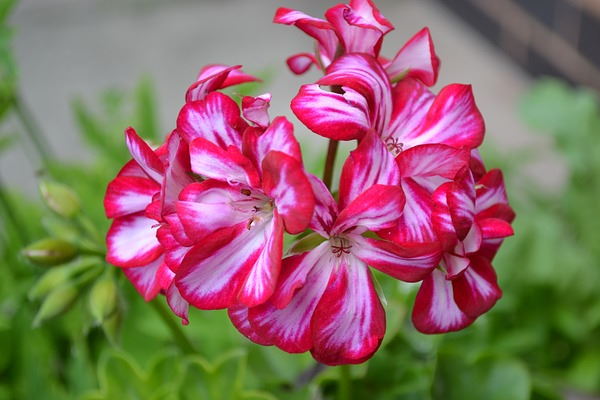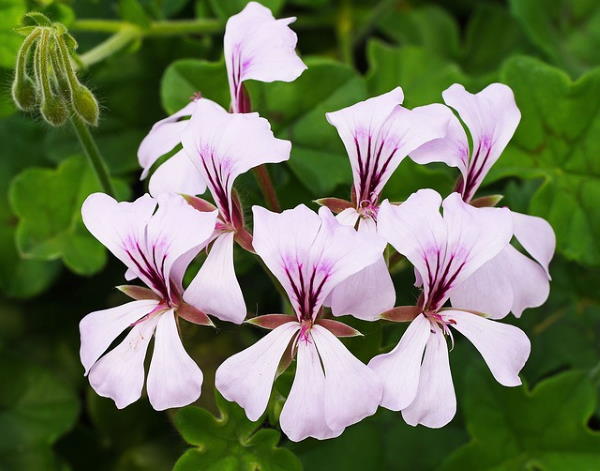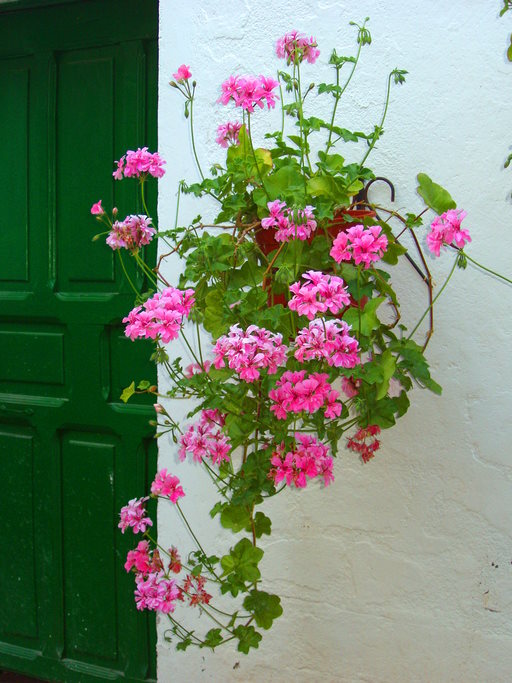Ivy Geranium Flowers
Ivy geraniums are eye-catching for their long, trailing stems studded with ivy-shaped leaves. And when it comes to showers of splashy blooms, this sun-loving beauty is in a class by itself. Give it a little care (it's easy!), and you'll enjoy flowers for months on end. You'll want to put this ivy leaf geranium in a hanging basket to show it off.
Here you'll discover how to get the most blooms, when to water and fertilize, plus how to overwinter your plant.
 Red-and-white blooms make this ivy geranium a knock-out container plant. Photo: PollyDot
Red-and-white blooms make this ivy geranium a knock-out container plant. Photo: PollyDotGet to Know Ivy Leaf Geraniums
This ivy leaf geranium sports clusters of alluring flowers, but the 5-lobed foliage that cover its long, slender stems is showy in itself. Its leaves look similar to English ivy, but with rounded edges. Somewhat fleshy, they are about 2 to 2-3/4 inches wide.
How big does ivy geranium get? Its weak, sprawling stems will trail up to 3 ft (90 cm).
You can train the stems to climb, if you want. Climbing geraniums look beautiful on a trellis inserted into the pot.
Known botanically as Pelargonium peltatum, this captivating perennial is native to South Africa. The named varieties are hybrids, and offer a big choice of gorgeous colors.
Ivy Geranium Varieties
New varieties offer a big selection. Ivy geranium colors may be white, pink, lavender, purple, orange, salmon, red or burgundy. Traditionally single, 5-petaled flowers, many newer cultivars have semidouble or double blooms. Some are bicolored and patterned.
You'll find geranium hanging basket plants for sale in spring and summer. Look for Pelargonium peltatum to be sure you're getting this ivy leaf geranium. 'Galilee' sports variegated leaves and rose-pink flowers. 'L'Elegante' is a popular variety with leaves edged in creamy white and a tinge of pink. 'Rouletta' has red-and-white blooms. 'Mauve Beauty' has double flowers that look like small rose blossoms.
 Crinkled Pelargonium leaves are upstaged by gorgeous flowers. Photo: Erich Westendarp
Crinkled Pelargonium leaves are upstaged by gorgeous flowers. Photo: Erich WestendarpCaring for Ivy Geranium Year-Round
Pinch and prune. Pinch off new stems regularly to encourage branching and to shape them as they grow. Deadhead spent flowers to keep your plant looking neat and to promote more blooms. Pruning geraniums back hard in spring will keep them compact.
Repot in spring. Ivy geranium blooms best if slightly pot-bound. Move your plant to a pot 1-2 inches (2.5-5 cm) larger when you see roots growing through the drainage holes. Or keep it in the same pot and just give it fresh potting mix.
Give it a winter rest. Overwinter geraniums in a cool basement or garage with a minimum temperature of 50°F/10°C. Water sparingly and stop fertilizing during this winter rest.
 Image istockphoto
Image istockphotoIvy Geranium Plant Care Tips
Light: Bright light to full sun. Give your ivy leaf geranium as much light as you can spring through fall. Move it outdoors for the summer, if you like. Just bring it back inside when the temperature drops below 50°F/10°C. This is a tender perennial that doesn't like the cold.
Water: Keep soil evenly moist, not soggy. Allow the top 1-inch (2.5 cm) of soil to dry between waterings. Cut back on watering in winter, but don't allow the soil to dry out completely.
Humidity: Average room (around 40-50% relative humidity). Use a cool-mist room humidifier to increase moisture around the plant.
Temperature: Cool nights (55-60°F/13-16°C) and warm days (65-75°F/18-24°C) will trigger flower buds.
Soil: Peat moss-based soilless mix.
Fertilizer: To get the most blooms, feed every 3 weeks with a high-phosphorus fertilizer only while the ivy geranium is budding and flowering. High-nitrogen fertilizers given to young plants will bring a lot of foliage growth, but few flowers.
Propagation: Take stem cuttings in spring and root in fresh potting mix. Geraniums are easy to grow from seeds, too. Sow seeds in early spring.


